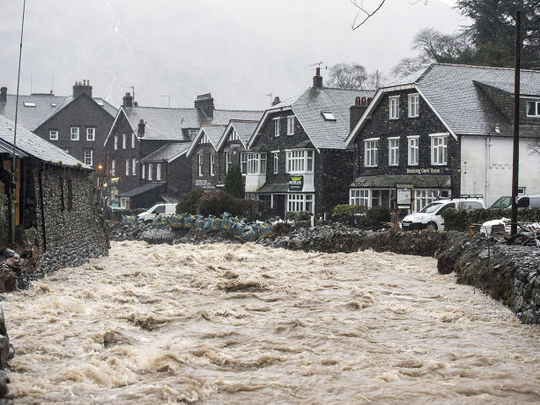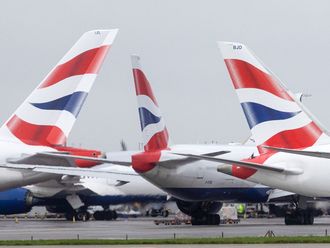
London: As residents of northern England and Scotland rebuild their lives after the floods that devastated the UK over December and January, climate change experts have warned we should be prepared for further increases in the amount of such ‘extreme weather’ in future.
The University of Oxford’s Dr Friederike Otto led a study that put a figure on how big a role man-made climate change had on storm Desmond, which brought record rainfall and led to particularly severe floods in Cumbria in the first week of December. Her team found that man-made (or anthropogenic) effects had increased the likelihood of such events by about 40 per cent.
And, with 2015 confirmed as the warmest year on record — smashing the previous highest global temperature set jointly in 2010 and 2014, taking us to about a whole degree warmer when compared to pre-industrial levels — we have been warned to expect more of the same during 2016.
December’s Paris Agreement on climate change saw 197 countries pledge to reduce greenhouse gas emissions from 2020 in a bid to hold the global average temperature to well below 2 degrees Celsius above pre-industrial levels. While that has been welcomed, it won’t provide any respite in the short term.
Discussing her findings on storm Desmond, Otto told Gulf News there was no doubt that anthropogenic climate change had increased the chances of such extreme weather occurring.
“I would say our result of 40 per cent is not that high. If you look at a once in a 100 year event, it’s now once in 70 years — so it’s still only once in a lifetime,” said Otto, who is also scientific coordinator at climateprediction.net. “But what was remarkable was that we could exclude zero — no change — so we will definitely have an increase in these kind of precipitations.
“There are more low pressure systems coming into the UK than there was without anthropogenic climate change. So the additional greenhouse gases in the atmosphere really make a difference in the atmospheric calculations and the likelihood is it will carry on in this direction.
“It’s not too late to change the global economy towards carbon-free and I think that the latest agreement in Paris, although they don’t specifically say we need zero emissions, is a great step in the right direction. There has been a recognition that this is what needs to happen. Given that expectations were relatively low, I think this is a great outcome.”
The UK’s Met Office last week confirmed that 2015 was 0.75 degrees warmer than the 1961 to 1990 average — up from 0.57 degrees in 2014 — and the size of that rise was a shock even to Peter Stott, who is head of climate monitoring and attribution at the Met Office Hadley Centre.
“The thing that was interesting for me personally was that the anomaly was quite as large as it was, and that was because of the expression of El Nino that has added a little bit on top of the overall warming trend,” Stott told Gulf News. “We think El Nino may have contributed a bit less than a tenth of a degree last year. But the bulk of the reason why it’s warm is not El Nino, it’s the fact there’s been climate change.
“There will always be extreme weather anyway, even without climate change, but there is plenty of evidence now that if you look around the world over the years then there’s been an increase in the frequency of heatwaves and there is now evidence for increasing heavy rainfall events. We’re seeing a general increase in extreme weather.”
And he warned: “We’re about one degree Celsius or so relative to pre-industrial levels now and, with further warming, we will get more extreme weather, more extraordinary waves, more floods and droughts, and sea levels will continue to rise, providing a threat to coastal communities, where many people live of course.
“There’s also risks of things such as irreversible melting of the Greenland ice sheet for example, which becomes much greater the more warming we have. The same with the West Antarctic Ice Sheet and permafrost melting, these are risks that are relatively hard to quantify, but they would have big impacts should they happen.”
— The writer is a freelance journalist based in the UK











